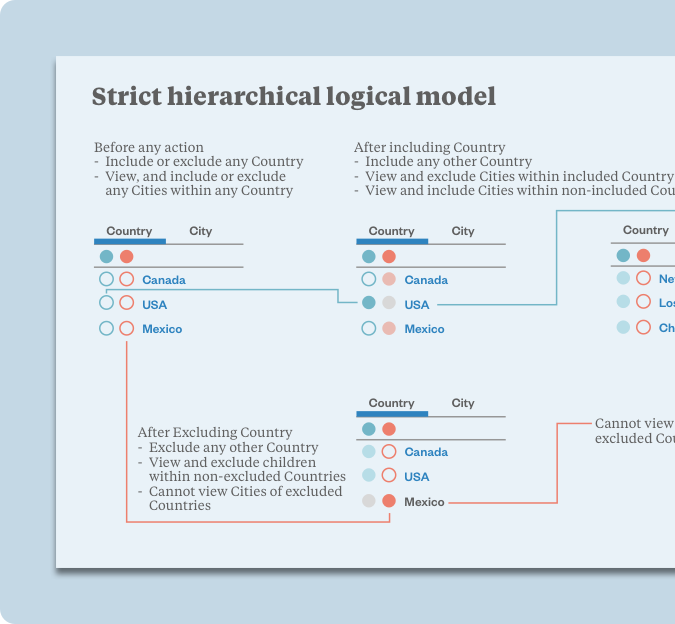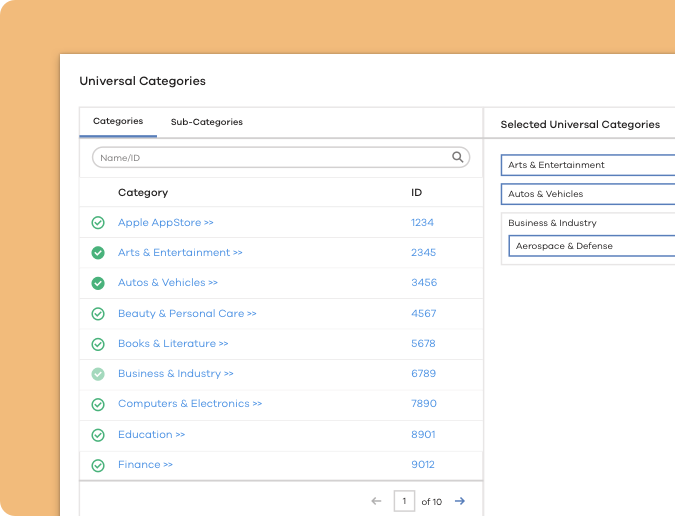Targeting Redesign
- Company:
- Xandr
- Industry:
- Ad Tech
- Role:
- UX Design Lead
- Project Type:
- Web app
What is Targeting
The targeting components were an important, commonly used set of tools that allowed the user to select when, where, and to whom their online ads would be shown. A key part of online advertising, the configuration & review of these settings made up a significant portion of our user’s time and responsibility. Given this, I was excited to improve our troubled targeting components when given the opportunity!
The Problem
This important series of components were causing costly setup errors due to a mismatch between our UI and backend validation. They also prioritized a long-tail of edge cases, rather than the user’s most common use-cases. Lastly, they desperately needed a visual design update in order to improve legibility and user comprehension of the settings.
The Plan
Research and document the backend validation, and redesign the UI validation to match. Research the user’s mental model of targeting, and prioritize accommodating their primary use-cases. Improve the accessibility & legibility of the settings, in order to improve user comprehension.

The Work
My research began with a series of interviews with end-users, some internal engineers, and our customer support specialists. Taking my findings from our backend engineering team, I documented and diagramed the several different validation models we would need to support in the UI. These user interviews informed my design for a visually structured summary of the applied settings. I also discovered that users reliably knew exactly what they planned to select, and had no need to browse a long list of options. These findings informed the design of an updated experience to better support the most common workflows, including a simplified and improved experience, with additional functionality progressively accessible for the long-tail of edge cases.

The Outcome
Completely eliminated UI setup errors due to misconfigured targeting settings, saving our users and our business significant amounts of money (not to mention frustration). Significantly improved user-reported understanding of targeting settings. Reduced the amount of time and network resources dedicated to the multiple-times-a-day task of reviewing and/or modifying targeting settings.
